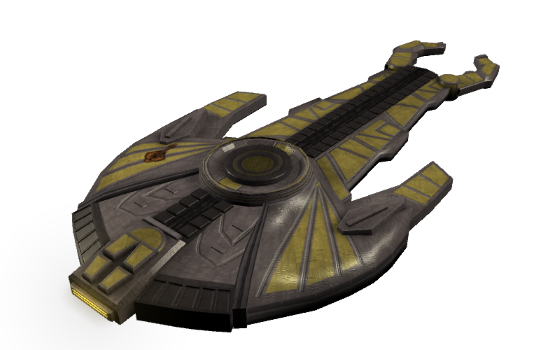Thank you guys, really appreciate all the feedback, and special thanks to
@RossN for deeming me worthy of WritAAR of the Week for it and bringing in new readers in the process. Real life has delayed the next chapter I'm afraid but I hope to have it up in a couple of days.
One gets the feeling the Union may be in for a rude surprise
They may indeed!
Andorians are Xenophile so even an Empire wouldn't be
that blood soaked and they have a weaker opening hand than the Cardassians. Still it
is an interesting idea, I'll have to consider it.

(Of course I also have a few ideas I want to try in 'normal' Stellaris. Decisions, decisions!)
Very nice chapter. The Cardassians have been blooded, the Antedeans humbled and an intriguing new power about to enter the picture.
Well I look forward to whatever voyage you embark on, maybe a sequel to your current AAR? - Tibetans in SPAAACE!
TBF the modders seem to have done their homework and the immediate region around Cardassia is not exactly overflowing with resources. All the more reasons to expand of course!
How do you know a bad Gul from a good?
He breaths!

Please tell me this new power isn't those hippy-dippy humans, shoving equality and non-interference down our throats.
(Then again, something about the placement doesn't work out. My knowledge of Trek geography is lacking, but the only empires I can think of in this region of space would be the Talarians or... the Breen. Never turn your back on them!)
Update: Reading this inspired me to play ST: New Horizons as the Husnock, an aggressive race we never saw and who were wiped out in the same episode they were "introduced"... let's just say if I find a system named Delta Rana, I'll be avoiding it like the plague.
Not the humans, not even humanoid! Breen is close, geographically speaking. However by the end of the century we'll be in contact with most of the Alpha and Beta Quadrant.
Haha excellent (and talk about a deep cut!), it really is a fun mod.
Nice, never been in into Star Trek much, but reading this AAR is still entertaining.

Glad to have you along. I hope to make this accessible to non-Trekkies which is a small part of a why I picked the Cardassians, though not the most famous ST race they've got a bit more depth to them, not simply Space Vikings or Space Romans. So there's room to play.
That's what they want you to think.
"You'd be amazed what people throw out..."
I mean, all that salvaged debris isn't going to study itself

...But seriously, just wandered over here from
the WritAAR of the Week thread and found this AAR to be quite entertaining so far. The Star Trek universe as a whole never really sparked my interest to the same degree as many others (though I did play a little Birth of the Federation back in the day and more recently completed a marathon binge of TOS, both of which I rather enjoyed), but I'm quite fond of Machiavellian schemer types, and the Cardassians suit my tastes quite nicely.
Looking forward to the next chapter!

Thank you for coming on board. As I said to Nikolai, I think the Cardassians are quite a good gateway into ST because they're very
human - arguably more human than the Earthlings in its most Mary Sue iterations.
Well this is a niche gem, and great to see you Jape. I always liked your support to my HOI2 AAR years ago.
And now to this - a great, beautifully presented AAR which I will watch with interest. I am really, really torn on the Cardassians; their potential was never fully realised in TNG or DS9 (although both came close) and I found them, well, a bit underpowered in BOTF (Feds or Romulans for me, I'm afraid). So far so good, although the Union looks surrounded by powerfil rivals...
Its been sometime Le Jones, welcome. I get what you mean, having recently rewatched DS9 I would have liked more scope with the Cardassians pre-Dominion War - I kind of assume they are what the TOS Klingons would have become had they not become Space Vikings. Some are more powerful than others; by 2200 we'll have a better idea of what the Alpha and Beta Quadrants have to offer the brave men and women of Cardassia.





















